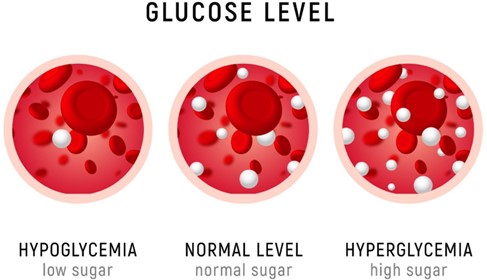The nurse is preparing to teach a 43-year-old man who is newly diagnosed with type 2 diabetes home management of the disease. Which action should the nurse take first?
Demonstrate how to check glucose using capillary blood glucose monitoring.
Assess the patient's perception of what it means to have diabetes.
Discuss the need for the patient to actively participate in diabetes management.
Ask the patient’s family to participate in the diabetes education program.
The Correct Answer is B
The correct action for the nurse to take first when preparing to teach a newly diagnosed 43-year-old man with type 2 diabetes home management of the disease is to assess the patient's perception of what it means to have diabetes. This will help the nurse to identify any misconceptions or fears the patient may have about the condition, and tailor the education to meet the patient's specific needs. Options A, C, and D are important components of diabetes education but can be addressed after the nurse has assessed the patient's perception of the disease.
Nursing Test Bank
Naxlex Comprehensive Predictor Exams
Related Questions
Correct Answer is B
Explanation
The patient received 38 U of NPH insulin at 7:00 AM, and by 1:00 PM, the insulin has been active for approximately 6 hours. The patient has missed lunch, which may lead to hypoglycemia, especially with the activity of the insulin.
Sending a glass of orange juice will provide the patient with a quick source of glucose to prevent hypoglycemia. If testing is further delayed, the nurse may request that the patient be allowed to eat lunch first or save the lunch tray for later, but immediate intervention is necessary to prevent hypoglycemia. Discontinuing the evening dose of insulin is not an appropriate action and should not be considered without consulting the healthcare provider.

Correct Answer is ["2"]
Explanation
0.25 mg is equivalent to 250 mcg (micrograms). Therefore, the correct answer would be to give half of a 125 mcg tablet, which would be 0.125 mg or 125 mcg.
Synthroid is a prescription medicine used to treat hypothyroidism (low thyroid hormone). Levothyroxine is given when your thyroid does not produce enough of this hormone on its own². The typical starting dosage for this use in adults is 12.5 mcg to 25 mcg, once per day¹. Therefore, if you have Synthroid 125 mcg tablets available and you need to give Synthroid 0.25 mg po, you should give **2 tablets**
Whether you are a student looking to ace your exams or a practicing nurse seeking to enhance your expertise , our nursing education contents will empower you with the confidence and competence to make a difference in the lives of patients and become a respected leader in the healthcare field.
Visit Naxlex, invest in your future and unlock endless possibilities with our unparalleled nursing education contents today
Report Wrong Answer on the Current Question
Do you disagree with the answer? If yes, what is your expected answer? Explain.
Kindly be descriptive with the issue you are facing.
